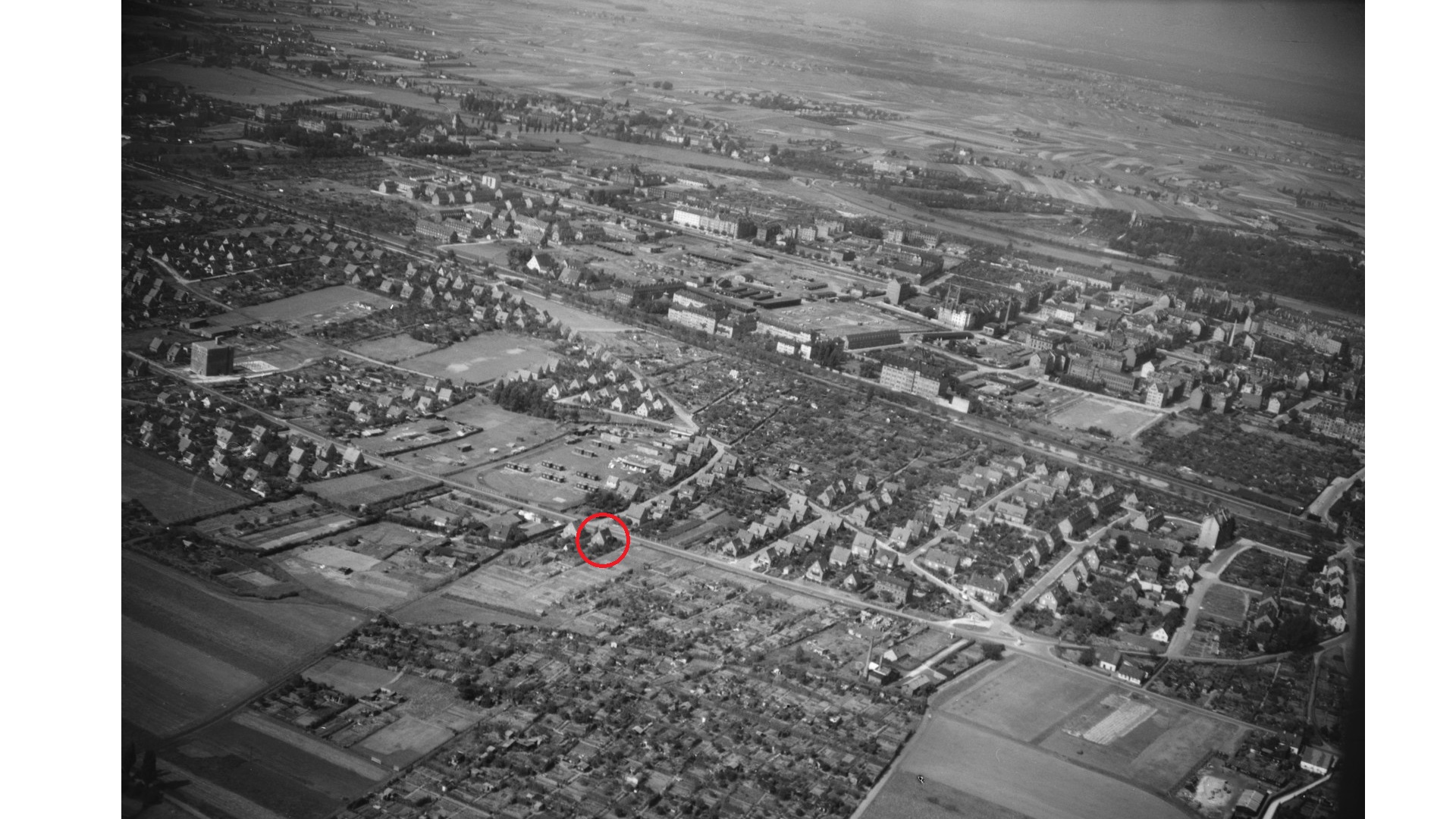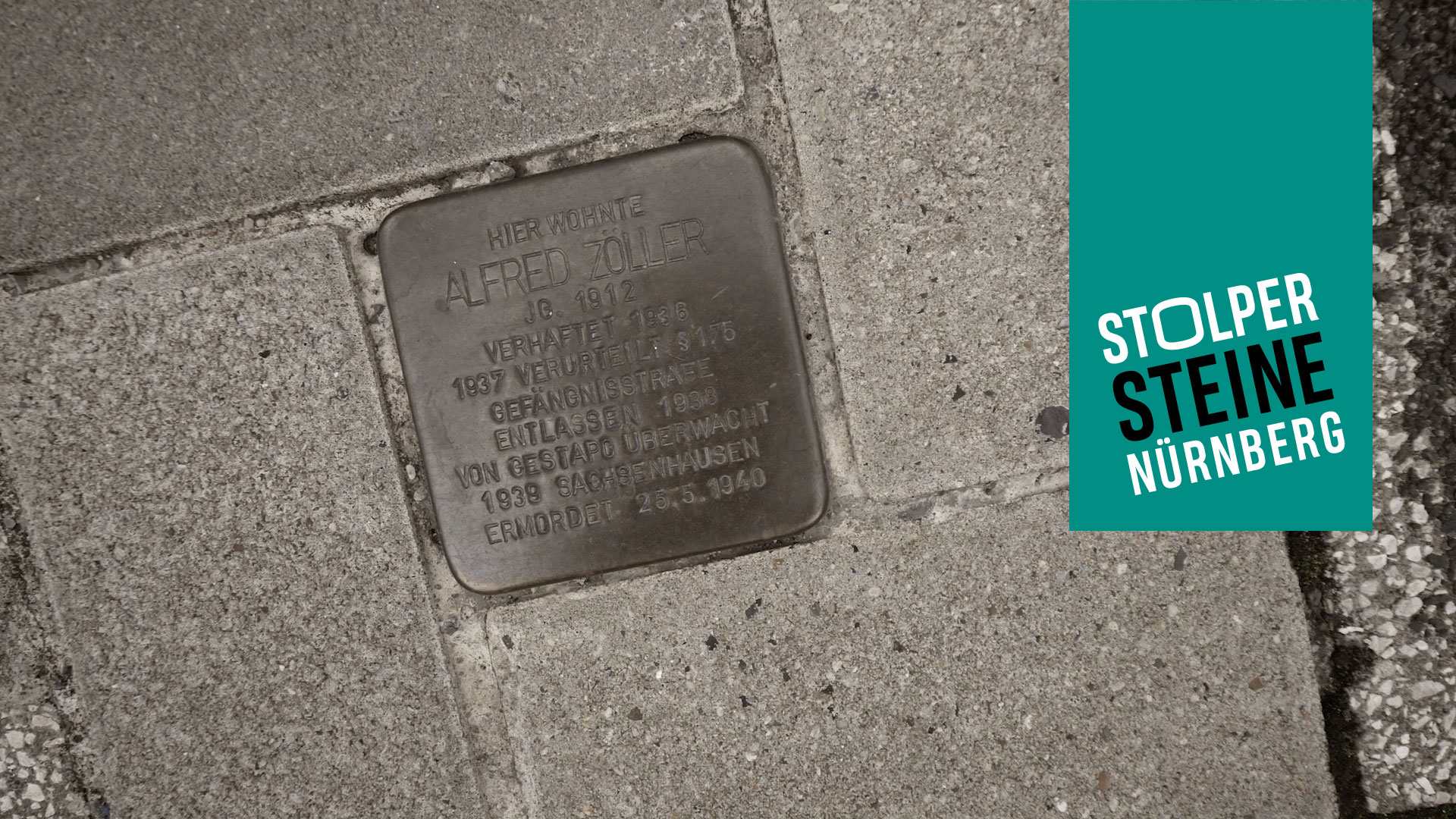| Location of stone: Leyher Strasse 25 | District: Gaismannshof |
| Sponsor: Fliederlich e.V. – Gay Community Centre, in memory of Ralph Hoffmann (†) | Laying of stone: 9 November 2018 |
Biography
On 9 November 2018 Gunter Demnig came to Nuremberg to lay stumbling stones. On the day which marked the 80th anniversary of the “Night of Broken Glass”, he laid stumbling stones for Jewish and homosexual victims of National Socialism. Fliederlich e.V. sponsored the laying of the stumbling stone for Alfred Zöller. Zöller was murdered in Sachsenhausen concentration camp in 1940.
Alfred Zöller was born in Fürth on 11 July 1912. After leaving school (Volksschule) he trained to be an upholsterer and decorator. He subsequently worked as a packer at the Triumph factory, which produced cycles and typing machines. His father was the factory manager.
At an early stage Zöller’s parents noticed that Alfred was not interested in girls. This was something they did not want to accept. As a result, a conflict arose between them and their son. In the spring of 1931, Alfred left his parents’ house, having written them a farewell letter. He travelled to Frankfurt am Main, where evidently he lived on the streets and became a victim of state oppression because of his sexual orientation. In June 1931 he was sentenced to two months in jail by the district court in Frankfurt am Main, for contravening Paragraph 175. Having served his sentence in Preungesheim Prison, he returned to Fürth.
In Nuremberg, Zöller visited meeting places associated with the city’s growing homosexual scene and built up a circle of friends there. Inevitably, he came into conflict again with the state authorities. In 1934, 22-year-old Zöller was arrested during a police raid on the “Zur Burg” pub, a known meeting place for homosexuals located in Nuremberg’s city centre. This was followed by further incidents involving Zöller and the police.
After being denounced by a sexual partner, criminal charges were brought against Zöller again in November 1936. The proceedings against him were part of the broad-ranging police investigations of former members of “Silhouette”, an association for homosexuals. In March 1937, at the Nuremberg-Fürth regional court, the public prosecutor brought charges against the association and the trial resulted in Zöller being given an eight-month prison sentence. Expressing its clear disapproval, the court declared that he had not confessed to any crime and, up to the end of the trial, had shown himself to be “unregenerate”.
After serving his sentence, Zöller went to live in Leyher Strasse in Nuremberg and worked as a newspaper deliverer for the “8 Uhr-Abendblatt” (“8-PM Evening News”). From this time on, he was under constant police observation. In July 1938, for instance, Zöller and Rudolf Koch were arrested after police officers found them in “Wirtschaftsraum 3. Klasse” – a meeting place for homosexuals – in Nuremberg’s main railway station. Koch had also been one of the convicted defendants in the “Silhouette” trial. Their previous criminal record was sufficient grounds for an arrest. However, because Zöller and Koch vehemently denied having been intimate with each other, the police had to later release them from custody.
The following year, a further incident must have occurred and this time it appears the police had a better case against him. In any event, it is documented that he was sent to Sachsenhausen concentration camp in December 1939, evidently by order of Nuremberg’s criminal investigation department. The camp had gained a reputation for its particularly cruel mistreatment and torture of homosexuals. Zöller was one of the prisoners who did not survive this ordeal. In May 1940 he was murdered in Sachsenhausen concentration camp. The camp authorities informed the registrar’s office in Oranienburg that the cause of death had been a “fracture of the base of the skull” resulting from a fight. It remains an open question whether Zöller was beaten to death by other prisoners or by members of the camp SS.
- Nuremberg City Archives, C 21/IX registration card.
- Nuremberg City Archives, public prosecutor’s office, Regional Court of Nuremberg-Fürth II, No. 759.
- Nuremberg City Archives, Central Office of Criminal Investigation Nürnberg-Fürth, No. 176.
- Main Hessen City Archives, 409/4: Frankfurt a.M. Prison-Preungesheim, No. 8575.
- Biographical compilation by Dr. Matthias Gemählich.





